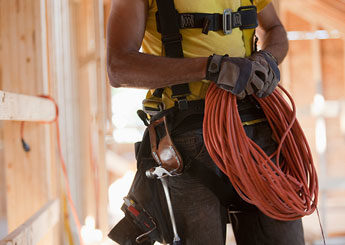Safety first: powered hand drills

Photo: Huntstock/Thinkstock
Powered hand drills can save workers a lot of time on the job, but caution is called for to avoid serious injuries. The Canadian Center for Occupational Health and Safety recommends following these tips when using powered hand drills:
- Ensure drill air vents are kept clear to maintain proper ventilation.
- Keep drill bits sharp.
- Clear the drilling area of all cords during use, and inspect cords for damage before each use.
- Disconnect the power supply before changing or adjusting drill bits or attachments.
- Ensure items being drilled are secured so they don’t move.
- Wear personal protective equipment, including safety glasses or goggles, or a faceshield.
Along with any list of “dos” comes a list of “don’ts.” When using a powered hand drill, never use a bent drill bit, and do not exceed the manufacturer’s recommendations for maximum drilling capacities. Refrain from using high-speed steel bits without first cooling the drill or using lubrication, and never attempt to free a jammed drill bit by starting and stopping the drill. When drilling, ensure you have proper footing and balance, and avoid reaching under or around stock being drilled. Never raise or lower the drill by its power cord. CCOHS also advises against using a powered drill in wet or muddy locations, and cautions against using excessive force when drilling into hard material.
Post a comment to this article
Safety+Health welcomes comments that promote respectful dialogue. Please stay on topic. Comments that contain personal attacks, profanity or abusive language – or those aggressively promoting products or services – will be removed. We reserve the right to determine which comments violate our comment policy. (Anonymous comments are welcome; merely skip the “name” field in the comment box. An email address is required but will not be included with your comment.)

